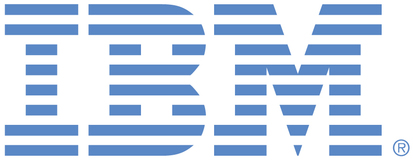
This portal is to open public enhancement requests against products and services offered by the IBM Data Platform organization. To view all of your ideas submitted to IBM, create and manage groups of Ideas, or create an idea explicitly set to be either visible by all (public) or visible only to you and IBM (private), use the IBM Unified Ideas Portal (https://ideas.ibm.com).
Shape the future of IBM!
We invite you to shape the future of IBM, including product roadmaps, by submitting ideas that matter to you the most. Here's how it works:
Search existing ideas
Start by searching and reviewing ideas and requests to enhance a product or service. Take a look at ideas others have posted, and add a comment, vote, or subscribe to updates on them if they matter to you. If you can't find what you are looking for,
Post your ideas
Post ideas and requests to enhance a product or service. Take a look at ideas others have posted and upvote them if they matter to you,
Post an idea
Upvote ideas that matter most to you
Get feedback from the IBM team to refine your idea
Specific links you will want to bookmark for future use
Welcome to the IBM Ideas Portal (https://www.ibm.com/ideas) - Use this site to find out additional information and details about the IBM Ideas process and statuses.
IBM Unified Ideas Portal (https://ideas.ibm.com) - Use this site to view all of your ideas, create new ideas for any IBM product, or search for ideas across all of IBM.
ideasibm@us.ibm.com - Use this email to suggest enhancements to the Ideas process or request help from IBM for submitting your Ideas.
IBM Employees should enter Ideas at https://ideas.ibm.com

Dear Martin, We are pleased to inform you this enhancement request has been delivered in APARs PH64949 and PH64950. You will also need to apply FL507 APAR PH64907/PTF UO02811.
Sincerely,
Db2 for z/OS Development
Status correction applied, as the full solution is not yet delivered.
I see that this idea to add the capability to drop a partition has been closed as "Delivered". What APAR/PTF delivers this capability?
We also have the need to be able to drop a partition from a range-partitioned tablespace. When we try to rotate partitions of an archive-enabled PBR tablespace Db2 requires us to disable archiving before the rotate then re-enable archiving after the rotate. However, when we re-enable archiving we cause a deadlock with CICS and the online transaction fails. In order to prevent the deadlock we have stopped rotating partitions and are just adding a new partition at the end of each month and emptying out the oldest one. Since we cannot drop the old partition we will end up with many empty datasets from the partitions that we should have been able to rotate out.
To have that option (to delete limits of partitions in PBR tables) available, is very important to us.
Presently, customer we support have 300+ PBR tables, the partition key is the MVS ID, and from time to time (1 to 2 years) customer delete LPARs, coalesce others, and divide some of them in two.
For the new LPARs we are able to add the partition limits, but what about the deleted ones?
We are in a situation where more partitions exists on the tables, than LPARs exists
Until now we faced no problems with that, but in the future? Who knows...